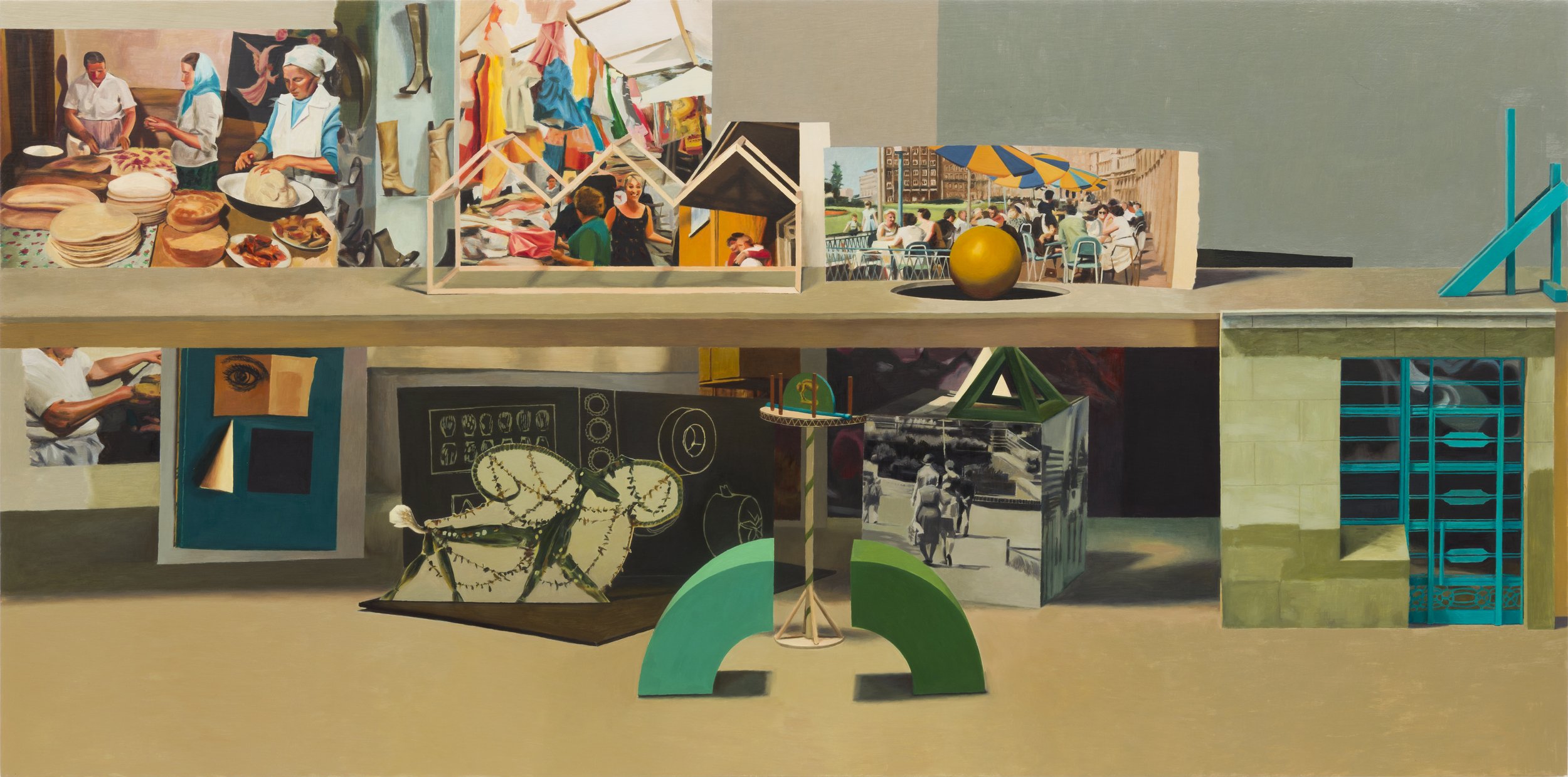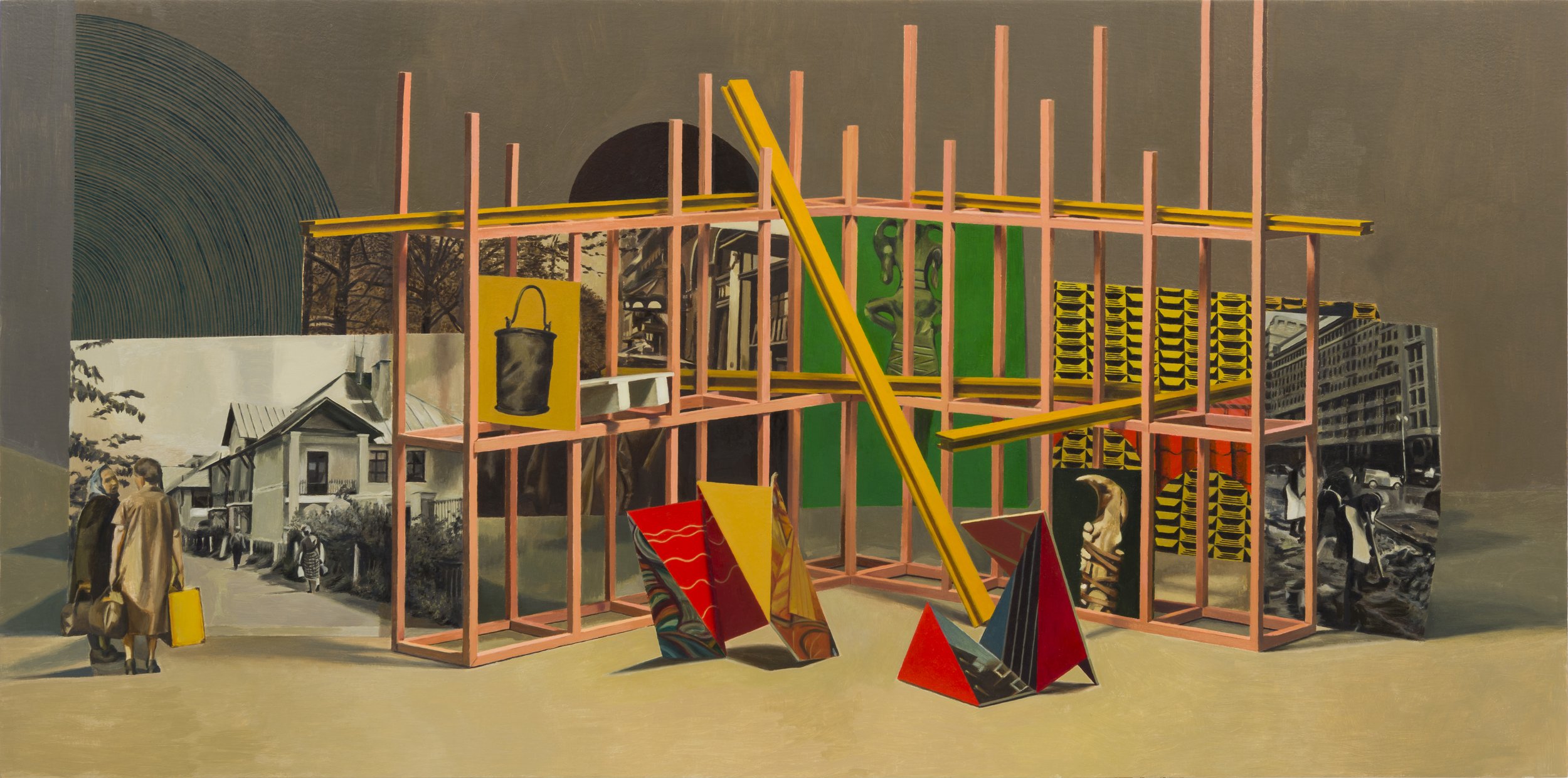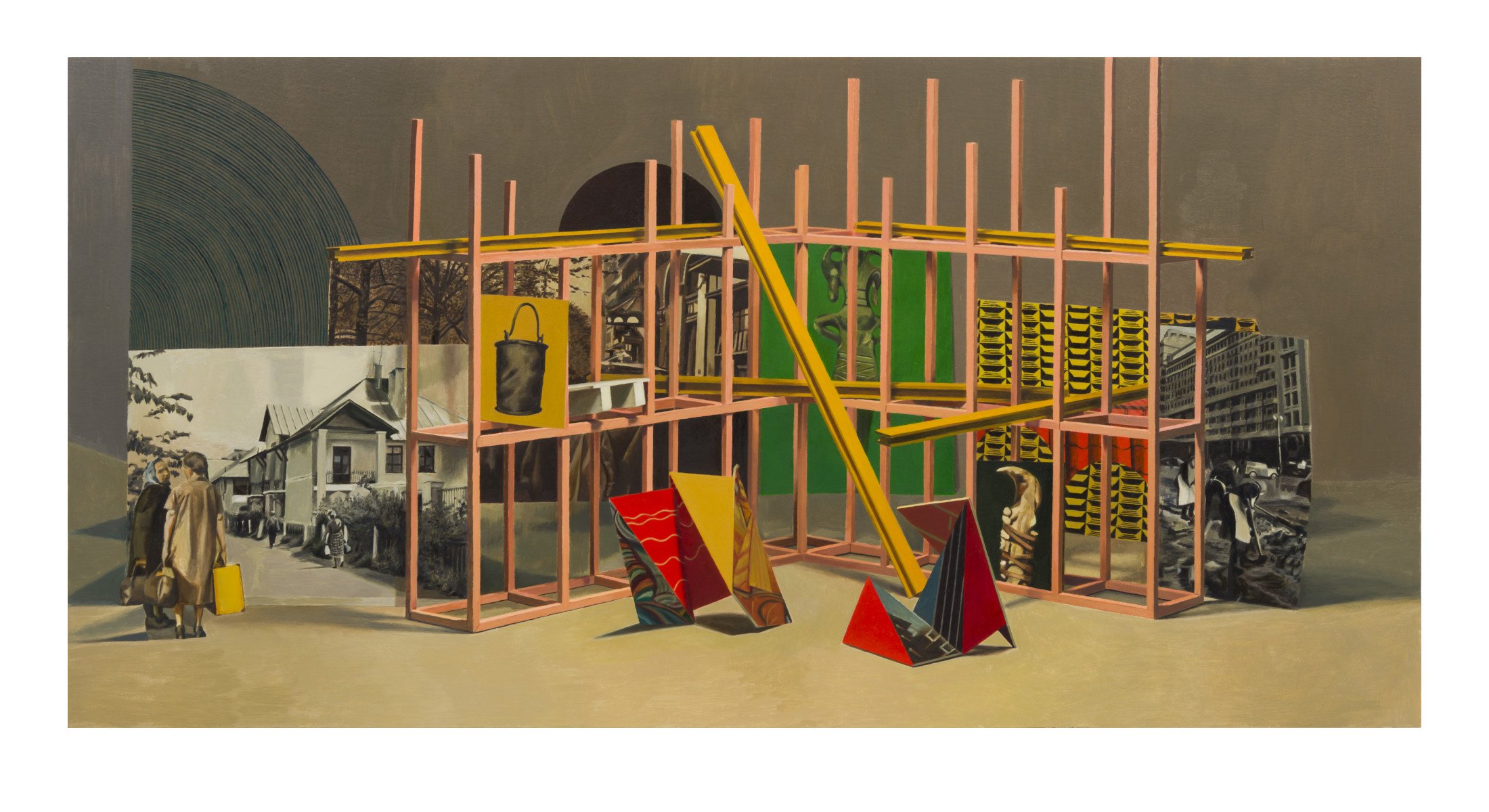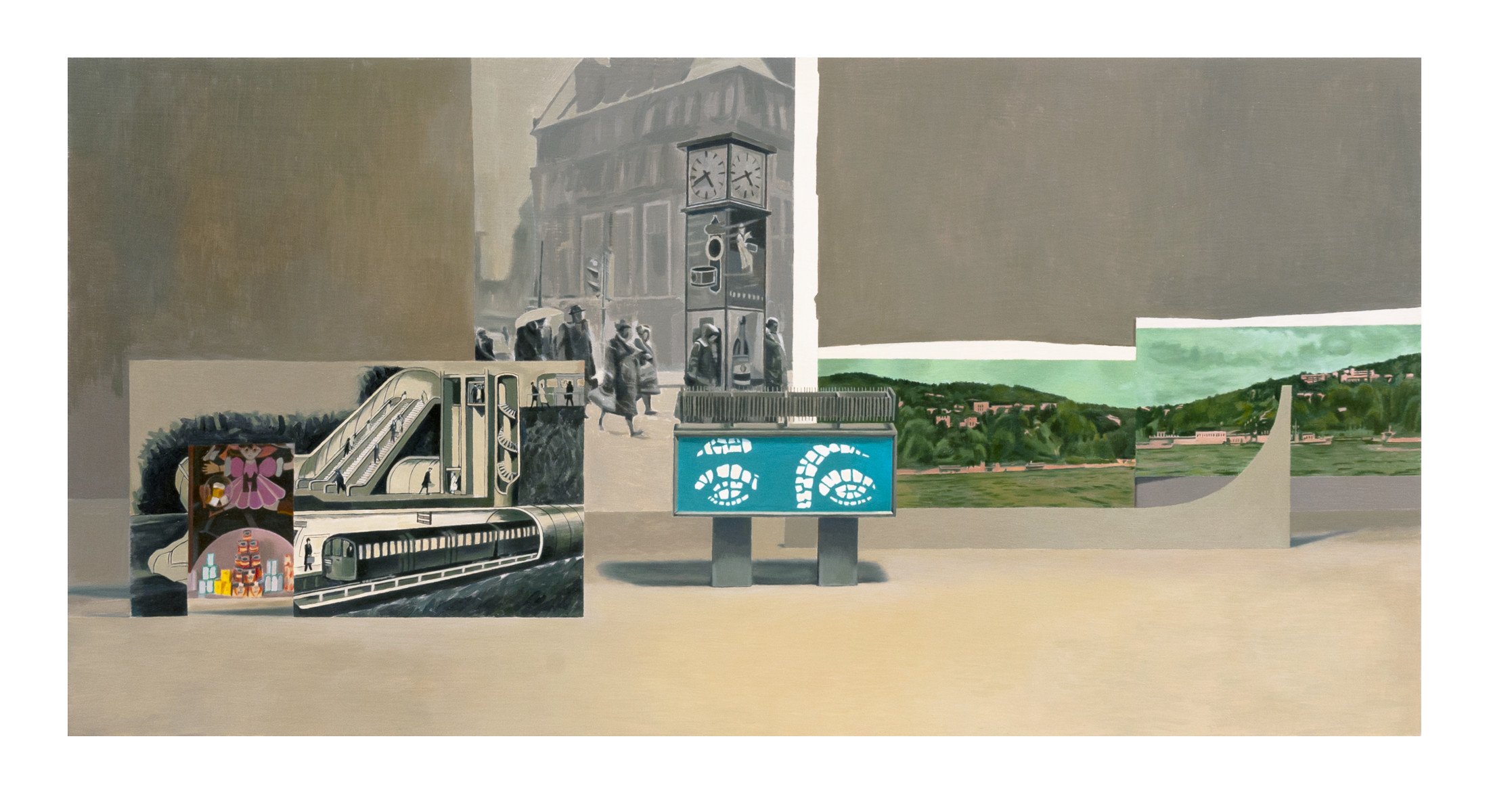Louise Bristow
Everyday objects can provide a profound insight into history, reflecting the society that created them and the ideology of the period in which they were conceived.
In Plans for Living, Louise Bristow and Coco Crampton explore the idea that form follows function and encourages us to look more closely at structure, symbolism, conventions and absurdities of human life.
We caught up with Louise to find out more about her practise….
Louise, Your work has an element of playfulness, would you agree and if so how
important is this in communicating your ideas?
Louise: I’d agree with this. I approach my work with a playful attitude, in that I take pleasure in
making it, and I see my studio as a place where I can be curious and explore whatever I want to.
I never know where something will lead, and so making a piece of work that initially seems silly or
meaningless might be exactly the right thing to do. I also think play is a really basic characteristic of
being alive. I remember the feeling of being a child and just ‘making stuff’ with no particular end in
mind, simply that this was the way I wanted to spend my time. This feeling of fulfilment, of being
deeply engaged, is what I am trying to recreate when I’m working.
Can you explain the process of constructing the environments you go on to
paint and where you find your source materials?
Louise: I create table-top set-ups in my studio, which I draw and paint from. These set-ups look a bit
like miniature stage sets and include models that I make, (often based on buildings and
architectural structures that I have seen in real life and photographed) as well as flat elements, like
photographs from books, pieces of patterned or coloured paper and bits of packaging that I’ve
found in charity shops or markets. By working with these solid things that I can hold and move
around I’m able to create a composition that I can then paint from. It’s a really different process
from working out a composition by making preparatory sketches on paper. My working process
allows me to deal with material (images, objects, ideas) that interests me. The decisions I make about
what to include are subjective, not governed by any faithfulness to scale or chronology, so I might
place an illustration of a prehistoric flint axehead next to a photograph of a tram from 1930s Berlin.
I’m thinking about what these images mean to me, not personally but in terms of when they were
made, what they signify. There is a sense of narrative created by combining these different
elements, but I’m aware that the narrative is not fixed and is going to be different for everyone
looking at the painting. That’s fine, I’m not trying to communicate a message, I just want to work with
this content, but I’m not sure what I’m trying to say - that arises from making the painting, and even
then I can’t really put it into words.
Your exhibition Plans For Living with Coco Crampton surrounds a common
interest in the concept that form follows function and an artefact’s other
functionality beyond being a jug or a chair, for example, how it can describe a
place and time by its design. Can you talk a little more about your work
included in the exhibition?
Louise: I’m very interested in how any human-made artefact tells us something about the context in
which it has been made. not only it’s function but also its design and aesthetics will be determined by
the values of the society that created it. Most of the images I use in my set-ups come from older
books and magazines, pre-1970s. Printing from these eras has a very particularly quality to it, and
of course what is represented and how it is depicted is completely of its time. I re-use some of the
same motifs in different paintings, so for example in both Commuters and Cenotaph I’ve used
the same turquoise and grey structure, which is actually a model I made of a bit of street furniture,
a lighting/advertising unit outside the Haus des Lehrers (House of the teacher) in Alexanderplatz,
Berlin. The paintings Factory,Cenotaph and Substructure all feature a model of the corner of the
John Lewis building on Oxford Street. It’s a great piece of modern architecture and I use it to signify
modernist values, as well as for its visual qualities - its muted colour, the repetition of strong
horizontal and vertical lines. The building has a Barbara Hepworth sculpture on one of its facades,
which I recreated on my model but isn’t visible in these particular paintings. I am loathe to identify
every element in my paintings because I don’t see the point of doing this. And also it’s enjoyable
when someone recognises for themselves some element, or it has resonance for them. They don’t
need me to tell them what it ‘means’, and in any case I don’t believe this is how meaning in art
functions.
What are you reading at the moment?
Louise:The Judas Rose by Suzette Haden-Elgin, which is the second novel in a science fiction trilogy
set several centuries in the future about a group of female linguists developing a secret language
for women.
Architecture, Modernism and the Communist experience are all quite prominent themes in your
constructed landscapes, could you share what draws you to these subjects?
Louise: I don’t have any familial link to Eastern Europe or Russia but I did grow up at the end of the
Cold War; this was the world conflict that defined my teenage years in the 1980s. I’m sure this had
an effect, as did visiting the USSR, Poland and Berlin when I was a student. For all its deficiencies,
and despite the many crimes committed in its name, Communism was at least an alternative to the
Capitalist model. It was the daily experience of millions of people for decades, and I am curious
about what this was like, which has led me to explore the books, films and art made in these times.
The other side of the coin is that many things about Capitalism are very harmful, criminal and
unjust, but we (in the West) seem unwilling to question its dominance or legitimacy in the world. The
different ways we humans have of organising ourselves interest me, and Modernism was a
utopian project which attempted to design a better world, with more effective and beautiful homes,
objects, clothing, urban environments etc. I find this inspiring.
You studied printmaking at Brighton University and have been co-director of East Side print CIC
since 2020, what stemmed your interest in the process?
Louise: I realised over time that I enjoy the process of deconstructing an image in order to remake
it, which can be a characteristic of printmaking. It’s not an immediate activity, like drawing or
painting, where you’re applying marks directly to a surface. Printmaking usually happens at one
remove, via a block, plate or screen that creates the image, and I actually enjoy the distance that
the process gives you. So having studied painting and then printmaking I find it interesting that I’ve
developed this process for making paintings that is really protracted; first making the models and
finding and preparing the collage elements, in order to then arrange a set-up, and then eventually
paint it.
Can you recommend any good resources for artists in Brighton and the
surrounding area?
Louise: Well obviously East Side Print in Kemptown! This is the screenprint studio I run with my two
co-directors, Cath Bristow and Jane Fox, where you can learn how to screenprint on paper or
fabric and then join as a member when you feel confident to work independently. And just around
the corner from us is Bip-Art, a studio which specialises in the printmaking techniques we don’t do;
lithography, etching and relief (woodcuts and linocuts). I have a space at Phoenix Art Space, which is
a large building in the centre of Brighton housing over 100 artists’ studios, as well as a gallery and
education programme. There’s often something interesting going on at Phoenix, and there’s a nice
café! Fabrica and ONCA are two fantastic independent spaces that both have programmes of
exhibitions, workshops, events and film screenings.
As you may know, it is essential that we conclude with a studio playlist!
Please would you let me have a 5-10 track studio playlist? – this can be what
you are listening to now or an ultimate playlist.
Louise: I don’t often listen to music in my studio, I tend to listen to podcasts or audiobooks. I do love
music, I just don’t like listening to it when I paint. Here’s a list of some songs I like listening
to at the moment, just not in the studio.
The Mysterious Vanishing of Electra by Anna Von Hausswolff
Babies by Pulp
Minor Work (CloudsRemix) by Suuns
Bizarre Love Triangle by New Order
VCR by The XX
Podcast: I’m enjoying The Guardian’s Black Box








Giclée print on 308gsm Photo Rag paper,